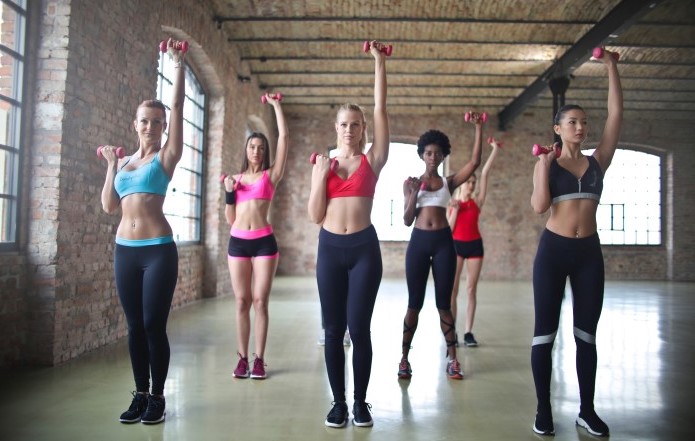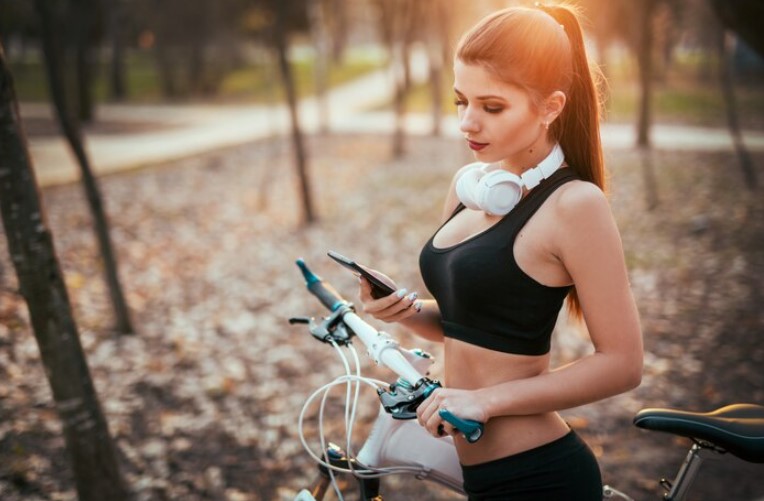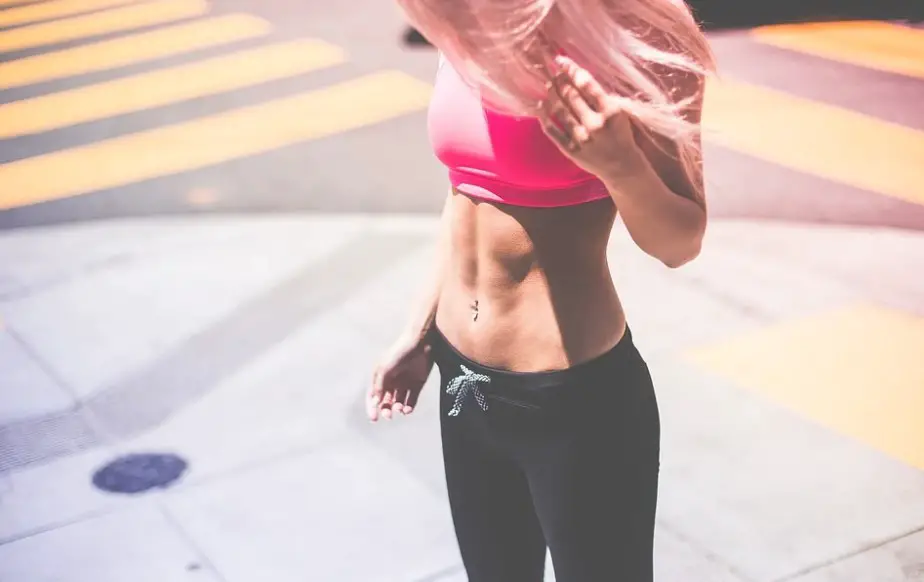Last Updated on October 3, 2023 by Alex PT
Yes, you can use sports bras as a chest binder, but it is important to do so safely. Sports bras are not specifically designed for chest binding, so they may not be as effective or comfortable as a dedicated chest binder.
Can I Use Sports Bras As A Chest Binder?
Using sports bras as a chest binder is not recommended for individuals seeking to flatten their chest, especially for transgender or non-binary individuals. While both sports bras and chest binders provide support, they serve different purposes, and there are important differences to consider:
Sports Bras:
- Support: Sports bras are designed to provide support and minimize breast movement during physical activities like sports and workouts. They do not aim to flatten the chest.
- Design: Sports bras typically have a different design with straps and a band that goes around the ribcage, which may not provide the compression needed to achieve a flat chest appearance.
- Breathability: Sports bras are often made from breathable, moisture-wicking materials for comfort during exercise, but this may not be ideal for all-day wear.
Chest Binders:
- Compression: Chest binders are specifically designed to compress and flatten the chest, creating a more masculine or non-binary appearance. They provide a higher level of compression than sports bras.
- Design: Binders are constructed differently, with a focus on compressing chest tissue to reduce its visibility. They often have a panel or front closure to achieve this effect.
- Sizing: Chest binders are typically available in various sizes and styles to cater to individual needs and body shapes, ensuring a proper fit and comfort during extended wear.
- Safety: Binders are designed with safety in mind, ensuring that they compress the chest without causing harm, discomfort, or breathing difficulties when worn correctly.
Using a sports bra as a substitute for a chest binder may not achieve the desired results and could potentially be uncomfortable or even unsafe. Chest binders are a more suitable option for those looking to flatten their chest while ensuring proper compression, comfort, and safety. It’s important to choose a chest binder that is the correct size and to follow the manufacturer’s guidelines for safe and effective use.
How To Use Sports Bra As A Chest Binder

A good technique if you have trouble binding due to your chest size without the use of flattened cardboard or tape may be wearing sports bras. Tight-fitting ones work best so try it out yourself! One can also layer them to provide a little extra compression. If that’s not enough, try reversing one bra around so the straps are on your back.
Wearing bras can be tricky and we definitely want to help you avoid the common but totally avoidable pitfalls! First, remember not to wear a bra that’s more than a size too small – they might fit tighter, but they can be super damaging. Secondly, if your bra feels particularly tight and you’re wearing it for longer periods of time – say more than eight hours – then consider replacing it with one that’s a better fit because otherwise you could suffer from pain or end up with sores on your body.
Step 1: Get a sports bra that’s a bit smaller than your normal size but still comfortable
You want your garment to be tight without feeling constricted. In other words, you don’t want it to feel like a straight-jacket. Typically, a dress that’s 1 size smaller than your usual dress size should fit you well. For example, if you usually wear a size 10 in clothes but are shopping for dresses on the bigger side of 10, try a size 12. If you can try on different dresses in order to make sure the nearest available one fits your figure perfectly.
Step 2: Make sure the bra you select has a label “no bounce.”
When you’re looking for a sports bra to wear during workouts, it’s important to find one that gives you the support you need. No matter how gently you’re going or how big your breasts are, if the sports bra is too tight, it can hurt and pinch and move around. Make sure the one you choose fits right – fit is the most important thing of all when it comes to wearing workout attire! A good way of knowing what size suits you best is by checking out online reviews and sizing charts by other wearers before making a purchase.
Step 3: If you are gifted with a larger chest, then add a second sports bra
Wearing multiple bras is an acceptable practice. This method is not typically considered binding , so it should be safe. However, make sure you can move around comfortably while wearing the bras.
Safety Tips

Binding your chest can provide a level of comfort, especially if you’re gender non-conforming or trans. This practice is often used with those who are undergoing treatment for gender; however, there are also health risks linked to binding. Because the pressure placed on one’s body can cause ribs to bend and break, it is important to remember not to bind too tightly or too frequently. It is easy to become dependent on this technique, so be aware when it is actually unhealthy; seek medical attention when necessary.
Some people prefer to use safer methods, like using safer binders. Using a binder that is too tight or made from an inappropriate material can cause discomfort and can even be unsafe – make sure you try on your binder before you purchase it to make sure it fits properly and isn’t hard to breathe in.
How to bind your chest safely and healthily
Binding your chest safely and healthily is crucial to minimize the risk of discomfort and potential health issues. Here are steps and tips to bind your chest safely:
1. Choose a Proper Binder:
- Invest in a chest binder specifically designed for this purpose. Do not use makeshift or DIY binders, as they can be unsafe.
2. Measure Correctly:
- Accurate measurements are essential for choosing the right binder size. Measure your chest at its widest point and refer to the manufacturer’s sizing guidelines.
3. Breathability and Material:
- Opt for binders made from breathable, moisture-wicking materials to reduce the risk of skin irritation and discomfort during extended wear.
4. Put Safety First:
- Follow the manufacturer’s instructions for putting on and taking off the binder.
- Do not bind too tightly. The binder should compress, but you should still be able to breathe comfortably.
- Do not use bandages, duct tape, or other improvised methods, as they can damage your skin and restrict breathing.
5. Give Your Body Breaks:
- Avoid wearing the binder for extended periods. Give your body breaks to allow proper circulation and reduce the risk of discomfort and injury.
6. Monitor Your Body:
- Pay attention to any signs of discomfort, pain, or difficulty breathing. If you experience these symptoms, remove the binder immediately.
7. Binding Breaks:
- Consider having “binding breaks” during the day, especially if you’re binding for many hours. Remove the binder, stretch, and take deep breaths.
8. Skin Care:
- Keep your skin clean and dry. Wash the chest area regularly to prevent skin irritation.
- Moisturize the skin to prevent dryness and chafing.
9. Rest Days:
- On rest days, avoid binding to give your body a break and promote circulation.
10. Seek Professional Advice:
- Consult a healthcare provider if you have any concerns or experience persistent discomfort or pain while binding. They can provide guidance on safe practices.
Common side effects of chest binding
- Breathing Difficulties:
- Chest binders compress the chest, which may restrict chest expansion and lead to shallow breathing. Severe binding or wearing binders that are too tight can cause difficulty taking deep breaths.
- Discomfort and Pain:
- Prolonged binding can lead to discomfort, soreness, and even pain in the chest, shoulders, and back. This discomfort may become more pronounced as the day progresses.
- Skin Irritation and Chafing:
- The constant pressure from binders can cause skin irritation, chafing, and rashes on the chest and underarms. Keeping the skin clean and dry can help reduce this risk.
- Overheating and Sweating:
- Binders can trap heat and moisture, leading to overheating and excessive sweating, especially in hot weather. This can contribute to skin irritation and discomfort.
- Rib and Chest Wall Changes:
- Extended and tight binding may lead to temporary changes in the ribs and chest wall. This can include soreness or discomfort, but these changes are usually reversible with time without binding.
- Breast Tissue Changes:
- Prolonged binding may cause some redistribution of breast tissue, potentially making it harder to achieve desired surgical outcomes if considering top surgery (chest reconstruction) in the future.
- Emotional and Psychological Impact:
- Binding can have emotional and psychological effects, including body image concerns, anxiety, or feelings of confinement. It’s important to prioritize mental health and seek support if needed.
- Gastrointestinal Issues:
- Tight binding may exert pressure on the abdomen, potentially causing digestive discomfort or acid reflux in some individuals.
- Hygiene Challenges:
- Wearing binders for extended periods can make it challenging to maintain good hygiene, potentially leading to odor or skin issues.
- Compromised Physical Activity:
- Binders may limit physical activities and range of motion, impacting one’s ability to participate in certain sports or exercises comfortably.
Frequently Asked Questions
How can I bind my chest without a binder?
Binding the chest is one of the options you can go with to make others less likely to identify you as transgender. However, if don’t want to purchase a chest binder, you might be able to use a sports bra or wear loose clothing.
How can I make my chest look flat?
It’s a common misconception that wearing tight clothing such as tight t-shirts or tank tops will somehow make your breasts look smaller. If you wear layers of clothes that can draw attention away from your chest, then it makes sense to wear tighter fitting garments underneath as they’ll display the curves of your chest underneath your top layer and so no one will be able to see what you’re hiding and wonder why you might be hiding in the first place. Alternatively, some people find that certain kinds of clothing simply hide larger chests and leave little to the imagination!
Can you bind with a swimsuit?
As a swimwear company, it’s important that we let you know that like most exercise-related clothing, our products will not become damaged if they get wet. We suggest against wearing our binders with other compression garments for exercise because binding too tightly can cause medical problems. However, you don’t have to worry about damaging your swimsuit if you decide on just letting it dry afterwards. Feel free to wear a size up from your regular fit while exercising in it as well because we want all of our customers to feel comfortable and supported during their workouts.
Do binders stop breast growth?
Binding involves putting a band not just around the chest for support, but also directly over the breast to minimize their size. A binder will not grow smaller with time and it is also not an alternative to a comfort bra which can help in making one feel better about their larger breasts by providing support without being so restrictive. When choosing a binder, please consult your doctor who will advise on how to wear it while avoiding risks such as bruises, infections or nerve damage.
Is Binding bad for your breasts?
If a person wears a binder for too long, it can cause health issues. There are two kinds of binders: active and passive. Active binding presses against the chest, while passive binding supports the body. Both types of binders should be replaced every six months if used correctly (replacing them sooner if they get damaged).
Final Words
We’ve come to the end of this informative article. We hope you were able to find good resources in your quest to know if you can use sports bras as a chest binder. If you have any questions or comments, don’t hesitate to contact us. Thanks!
References:
https://www.quora.com/Can-I-use-sports-bras-as-a-chest-binder-How
https://medium.com/@markeyajacob829/is-it-possible-to-use-a-sports-bra-as-a-binder-5040ec325132

Hi! I’m Alex PT. I hold a Bachelor’s degree in Sports Management from Indiana University and have over seven years of valuable experience working in a Sports Event Management Company. I founded SportBlurb with the passion for bringing you the latest, most insightful, and engaging content in the world of sports. So, whether you’re a die-hard fan or want to stay informed, I’ve got you covered!

